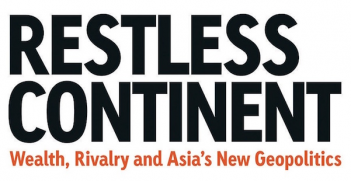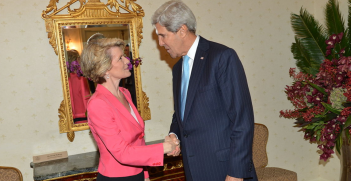Reading Room: Abe's Remarkable Restoration

In December 2012, Shinzō Abe achieved perhaps the most remarkable comeback of post-war Japanese politics by becoming the Japanese prime minister for a second time. Not since Shigeru Yoshida in 1948 has a Japanese politician managed such a feat. Moreover, in contrast to his first unhappy leadership experience between 2006 and 2007, Abe has dominated Japanese politics this time around. He has won elections, transformed Japanese security policy and adopted a major economic reform platform under the banner of ‘Abenomics’.
As such, Abe undoubtedly warrants considerable scholarly attention. Why has he been able to return to the leadership despite his earlier failures? How has he been able to retain the prime ministership for so long this time? Has he been successful in pursuing his agenda? What will his legacy be?
In The Abe Restoration: Contemporary Japanese Politics and Reformation, Craig Mark offers an early analysis of the Abe prime ministership. Drawing solid conclusions now is complicated by the fact that Abe will likely continue as prime minister until 2018. This is when the rules of his political party, the Liberal Democratic Party (LDP), dictate that he must step down as party president and thus also as prime minister. Even if the rules are not changed between now and then, Abe still has the better part of another two years to complete his political agenda. Nonetheless, Mark identifies some of the major issues to have arisen so far during Abe’s time in office, notably Abe’s electoral successes, Abenomics, the Trans-Pacific Partnership, as well as security policy reform and constitutional ‘reinterpretation’.
The Abe Restoration is a slim volume, divided into seven chapters, in addition to a preface (acting as a kind of introduction) and a brief conclusion. Its aim is simply ‘to provide an analysis of the various aspects of Abe’s transformation’. The Abe ‘restoration’ is naturally a play on the Meiji Restoration. However, Mark acknowledges that Abe’s prime ministership, while ‘far reaching’, ‘hardly approaches such an intense and widespread level of change’ as that which occurred during the Meiji Era.
Nevertheless, the book offers a good snapshot of Abe’s prime ministership, identifying in the process the importance of Abe’s prime ministership to the major changes taking place in Japan today. Perhaps because the period in question is so brief, it tends to return repeatedly to the same issues across several chapters (for example, on Abenomics and the security policy changes, which appear regularly from chapter 2 onwards). More might have also been done to address some of the puzzles relating to Abe’s restoration, especially his unlikely victory in the LDP presidential election of September 2012.
The argument put forward is that Abe benefited from ‘the predominance of more conservative rural-based Diet members in the wake of the 2009 defeat’, which ‘skewed the LDP more to the right’. Yet little extended reasoning or evidence is offered to support this claim. Further, the book mischaracterises the 2012 LDP presidential election as a ‘three-way competition’ involving previous LDP leader, Sadakazu Tanigaki, Abe, and Shigeru Ishiba. In fact, the first round of the election process was a five-way battle that did not include Tanigaki, who had already withdrawn owing to a lack of support but instead involved Abe, Ishiba, Nobuteru Ishihara, Nobutaka Machimura, and Yoshimasa Hayashi.
Elsewhere, the book adopts a descriptive, journalistic style that does well in covering the breadth of Abe’s tenure as prime minister so far but sometimes struggles to provide an ordered understanding of how these events link together or fit into a wider context. The book’s descriptive style, unfortunately, reflects the fact that the bulk of the sources are drawn from international newspapers and other policy-related media, while the prevalence of run-on sentences may also deter some readers.
Overall, The Abe Restoration should appeal to those who have a keen interest in the latest developments in Japanese politics or who are seeking to understand the core elements of Shinzō Abe’s historic prime ministership. Although not a definitive account of Abe’s leadership, this book offers a clear starting point from which to understand the important impact Abe has had on Japan.
Craig Mark, The Abe Restoration: Contemporary Japanese Politics and Reformation, Lanham, MD: Lexington Books, 2016.
Dr H. D. P. (David) Envall is a Research Fellow in the Department of International Relations, Coral Bell School of Asia Pacific Affairs, at The Australian National University.





